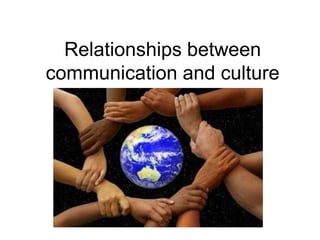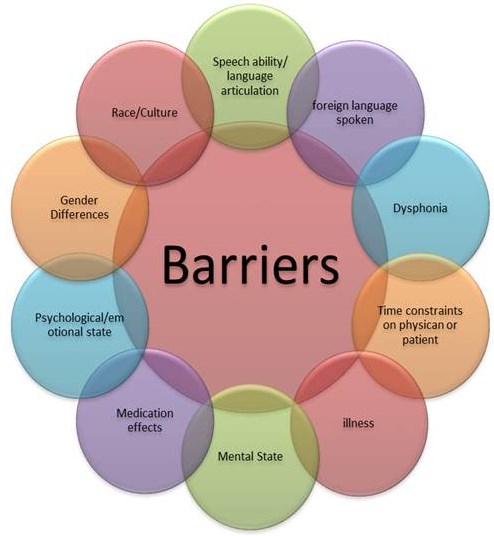Characteristics of Aggressive Communication
Aggressive communication is characterized by being domineering, condescending, sarcastic, and opportunistic. It often involves bossy, mean-spirited behavior that lacks appreciation and displays arrogance.
Aggressive communication is characterized by domineering, condescending, sarcastic, and opportunistic behavior. These negative traits can be seen in individuals who are bossy, mean-spirited, disrespectful, and arrogant in their interactions with others. This type of communication often involves putting others down, overpowering them, and not listening to their perspectives.
It may also include frequent interruptions and the use of “you” statements to criticize and control others. By understanding the characteristics of aggressive communication, it becomes easier to identify and address these behaviors in order to foster healthier and more effective communication.
What Is Aggressive Communication?
Aggressive communication is characterized by speaking loudly, criticizing others, attempting to dominate, frequent interruption, and using humiliation as a form of control. It often involves bossy and mean-spirited behavior, lacking appreciation and displaying arrogance.
Definition Of Aggressive Communication:
Aggressive communication refers to a style of communication in which individuals express their thoughts, opinions, or desires in a forceful and confrontational manner. This communication style is characterized by dominating behavior, condescension, sarcasm, and opportunism. Aggressive communicators often demonstrate bossiness, meanness, a lack of appreciation, and arrogance in their interactions with others.
Examples Of Aggressive Communication Style:
- Domineering: Aggressive communicators tend to dominate conversations, disregarding the opinions and feelings of others. They adopt a controlling and authoritative tone, often interrupting or talking over others to assert their ideas forcefully.
- Condescending: Aggressive communicators may belittle or patronize others, using a superior tone or language that undermines the intelligence or worth of the person they are speaking to. This can make others feel inferior or disrespected.
- Sarcastic: Aggressive communicators often employ sarcasm as a means of expressing their frustration or criticism. They use biting remarks or ironic statements to undermine others or make them feel foolish.
- Opportunistic: Aggressive communicators might seize opportunities to demean or attack others when they perceive a weakness or vulnerability. They may exploit sensitive topics, personal information, or past mistakes to gain an advantage or assert their dominance.
Remember, aggressive communication can be detrimental to effective and healthy communication in personal relationships, the workplace, or any other social setting. Understanding the characteristics of this communication style can help us recognize and address it more effectively for better interpersonal dynamics.
Characteristics Of Aggressive Communication
Aggressive communication is characterized by domineering behavior, condescension, sarcasm, and an opportunistic attitude. It often involves bossiness, mean-spiritedness, a lack of appreciation, and arrogance.
Aggressive communication is characterized by various behaviors and attitudes that can be detrimental to effective interpersonal relationships. Understanding these characteristics can help recognize and address aggressive communicators. Here are some key traits to look out for:
Domineering Behavior:
- Interrupting and talking over others: Aggressive communicators tend to dominate conversations by interrupting and talking over others, disregarding their opinions and thoughts.
- Using forceful body language: They may exhibit dominant body language, such as standing too close or using aggressive gestures, to assert their dominance.
- Seeking control: They have a strong desire to control and manipulate situations and conversations to suit their own interests.
Condescending Attitude:
- Belittling and demeaning language: Aggressive communicators often use condescending and derogatory language, undermining others and making them feel inferior.
- Patronizing tone: They adopt a tone that suggests superiority, speaking down to others and dismissing their ideas without consideration.
- Dismissive behavior: They may brush off others’ contributions and dismiss them as irrelevant or unworthy of attention.
Sarcastic Remarks:
- Mocking and ridiculing: Aggressive communicators resort to sarcasm as a means of derision, using irony or ridicule to belittle others and make them feel foolish.
- Passive-aggressive comments: They make veiled, derogatory remarks that appear harmless on the surface but contain a hidden intention to offend or hurt.
- Using humor as a weapon: Aggressive communicators may use sarcasm and mockery disguised as humor, using jokes to demean and humiliate others.
Opportunistic Approach:
- Exploiting weaknesses: Aggressive communicators seize any opportunity to exploit others’ vulnerabilities or weaknesses for their gain or to gain an upper hand.
- Taking advantage of power differentials: They exploit power dynamics to assert control or to manipulate situations in their favor.
- Lacking empathy and consideration: Aggressive communicators prioritize their own interests and desires over the feelings and needs of others, often disregarding the consequences of their actions.
Recognizing these characteristics of aggressive communication can help individuals address and navigate such interactions more effectively. It is important to foster open and respectful communication to build healthy relationships based on mutual understanding and empathy.
Effects Of Aggressive Communication
An aggressive communication style is characterized by speaking loudly and overbearingly, frequent interruption, using humiliation to control others, and attempting to dominate conversations. These traits often result in strained relationships and a lack of effective communication.
Impact On Relationships:
Aggressive communication can have significant effects on relationships. Here are some of the ways it impacts interpersonal connections:
- Breakdown of trust: Aggressive communication erodes trust between individuals. The aggressive behavior, such as being domineering and condescending, creates a hostile environment that makes it difficult for trust to thrive.
- Resentment and hostility: Aggressive communication breeds resentment and hostility among people involved. The aggressive language and tone used can create long-lasting negative emotions, leading to strained relationships.
- Communication barriers: Aggressive communication hinders effective communication. The fear of confrontation and negative reactions can prevent individuals from expressing their thoughts and feelings openly, which can lead to misunderstandings and miscommunication.
- Isolation and alienation: Aggressive behavior can isolate and alienate individuals. When faced with aggression, people may withdraw from social situations or distance themselves from the aggressive communicator to protect their well-being.
Negative Consequences In Professional Settings:
Aggressive communication can have detrimental effects in professional settings. Here’s how it can negatively impact the workplace:
- Decreased productivity: Aggressive communication creates a hostile work environment, reducing employee satisfaction and leading to decreased productivity. It can disrupt teamwork, cooperation, and collaboration among colleagues.
- High turnover rate: Aggressive communicators can cause high turnover rates within organizations. Constant exposure to aggression and disrespectful behavior can lead to increased employee dissatisfaction, leading them to seek opportunities elsewhere.
- Negative organizational culture: Aggressive communication contributes to a toxic organizational culture. It sets a negative tone, making it difficult for employees to thrive, grow, and contribute to the success of the organization.
- Stifled creativity and innovation: Aggression stifles creativity and innovation. When individuals feel threatened or intimidated, they are less likely to take risks or share ideas, impacting organizational growth and progress.
Psychological Effects On Individuals:
Aggressive communication can have profound psychological effects on individuals. Here are some of the ways it can impact mental well-being:
- Increased stress and anxiety: The presence of aggression in communication can lead to heightened stress and anxiety levels. Constant exposure to aggression can create a tense and hostile environment, impacting individuals’ mental health.
- Low self-esteem and self-worth: Aggressive communication can lower individuals’ self-esteem and self-worth. The demeaning language and constant criticism can make individuals doubt themselves, leading to a negative self-perception.
- Emotional trauma: Aggressive communication can leave individuals with long-lasting emotional trauma. The verbal attacks, insults, and derogatory remarks can deeply affect a person’s psyche, leading to emotional scars.
- Difficulty in forming healthy relationships: Individuals who experience or exhibit aggressive communication may struggle in forming healthy relationships. The learned patterns of aggression can hinder their ability to connect with others positively and break free from the cycle.
Remember, effective communication is essential for fostering healthy relationships, both personally and professionally. It is crucial to address and mitigate aggressive communication for the well-being of individuals and the overall harmony of the environment.
How To Identify Aggressive Communication
Aggressive communication can be identified through characteristics such as speaking loudly and overbearingly, criticizing others, using humiliation to control others, attempting to dominate conversations, frequent interruptions, and using “you” statements.
Aggressive communication can be harmful and distressing, but it’s important to be able to recognize it in order to address and manage the situation effectively. Here are some ways to identify aggressive communication:
Signs And Red Flags:
- Aggressive tone: Pay attention to the tone of voice used by the communicator. Aggressive individuals often use a confrontational and hostile tone that can be intimidating.
- Intimidating body language: Watch for signs of aggression in the communicator’s body language, such as clenched fists, raised voice, or invading personal space.
- Verbal attacks: Aggressive communicators may engage in personal attacks, insults, and name-calling as a way to demean and belittle others.
- Manipulative tactics: Look for signs of manipulative behavior, such as guilt-tripping, gaslighting, or passive-aggressive comments meant to undermine others.
- Lack of empathy: Aggressive communicators often display a lack of empathy or disregard for the feelings and perspectives of others.
Verbal And Non-Verbal Cues:
- Excessive use of sarcasm: Aggressive individuals frequently employ sarcasm as a way to mock and criticize others, often using it in a derogatory manner.
- Interrupting and dominating conversations: Aggressive communicators may constantly interrupt others and try to dominate conversations, refusing to let others speak or express their opinions.
- Aggressive body language: Look for aggressive body language cues, such as clenched fists, intense eye contact, and leaning forward in a confrontational manner.
- Overly defensive reactions: Aggressive individuals tend to react defensively to any perceived criticism or questioning, often becoming hostile and argumentative.
Observing Patterns Of Behavior:
- Consistent aggression: Take note of any consistent patterns of aggressive behavior displayed by the communicator. Aggression that occurs frequently is a clear indication of a communication style.
- Targeting specific individuals: Aggressive communication may be directed towards specific individuals or groups, with the intent to intimidate or dominate them.
- Ignoring boundaries: Aggressive communicators often disregard personal boundaries and may invade others’ personal space, constantly interrupt, or make inappropriate comments.
By becoming aware of these signs and red flags, you can better identify aggressive communication and take appropriate steps to address the situation. Remember, effective communication is based on respect and understanding, so it’s crucial to address aggressive behavior to foster a healthy and positive environment.
Dealing With Aggressive Communication
Aggressive communication is characterized by traits such as a domineering attitude, condescension, sarcasm, and opportunism. It often involves bossy behavior, meanness, a lack of appreciation, and arrogance.
Setting Boundaries:
- Clearly define your personal boundaries and communicate them assertively.
- Educate others about your boundaries and make it known that you expect them to be respected.
- Be firm and consistent in enforcing your boundaries.
- Avoid making excuses or apologizing for your boundaries.
- Practice self-care and prioritize your well-being.
Active Listening Techniques:
- Provide your full attention to the speaker and maintain eye contact.
- Use non-verbal cues such as nodding and facial expressions to show you are engaged.
- Avoid interrupting and allow the speaker to finish their thoughts before responding.
- Summarize what the speaker said to ensure understanding and show that you were listening.
- Ask clarifying questions to gain a deeper understanding of the speaker’s perspective.
Assertive Communication Strategies:
- Use “I” statements to express your thoughts and feelings assertively.
- Be direct and specific in expressing your wants and needs.
- Use confident body language and maintain a calm tone of voice.
- Set limits and express your boundaries without aggression or hostility.
- Practice active listening when engaging in assertive communication.
Tips For Effective Communication
An aggressive communication style is characterized by speaking in a loud and overbearing voice, criticizing others, using humiliation to control others, attempts to dominate, frequent interruption, and using “you” statements. Developing awareness of these characteristics can help improve effective communication skills.
Importance Of Empathy And Understanding:
- Empathy and understanding are crucial elements of effective communication. They help create a supportive and respectful environment where all parties feel heard and valued.
- When communicating aggressively, empathy and understanding are often disregarded, leading to escalated conflicts and damaged relationships.
- By cultivating empathy and understanding, individuals can better recognize and acknowledge different perspectives, emotions, and needs, leading to more constructive and empathetic communication.
- Practicing empathy involves actively listening, putting oneself in the other person’s shoes, and acknowledging their feelings and experiences.
- Understanding requires the willingness to seek common ground, find mutually beneficial solutions, and maintain a respectful demeanor throughout the conversation.
Building Healthy Communication Habits:
- Developing healthy communication habits is essential for effective interaction and conflict resolution.
- Healthy communication habits involve expressing oneself assertively, using “I” statements, and avoiding blame or personal attacks.
- Active listening is another crucial habit to cultivate, which involves fully engaging in the conversation, paying attention to verbal and nonverbal cues, and not interrupting or assuming the other person’s thoughts.
- Setting clear boundaries and expectations in communication can help establish a safe and respectful space where concerns can be addressed without aggression.
- Practicing mindfulness and self-awareness can also contribute to healthier communication by avoiding impulsive reactions and considering the impact of one’s words and actions on others.
Mediation And Conflict Resolution Techniques:
- Mediation and conflict resolution techniques are valuable tools in managing aggressive communication and facilitating constructive dialogues.
- Mediation involves the presence of a neutral third party who helps facilitate communication, ensure fairness, and guide the participants towards a resolution.
- This process encourages active listening, empathy, and collaborative problem-solving, enabling the parties involved to identify common goals and find mutually agreeable solutions.
- Conflict resolution techniques, such as active problem-solving, compromise, and negotiation, can effectively address conflicts and prevent them from escalating into aggressive communication.
- Encouraging open dialogue, fostering a non-judgmental environment, and promoting respect for diverse opinions are key principles of successful mediation and conflict resolution.
By incorporating empathy and understanding, building healthy communication habits, and utilizing mediation and conflict resolution techniques, individuals can promote effective communication, foster positive relationships, and prevent the escalation of aggressive behavior. Developing these skills requires practice, self-reflection, and a commitment to respectful and empathetic interaction.
:max_bytes(150000):strip_icc()/type-a-angry-frustrated-Peter-Dazeley-56a905e85f9b58b7d0f76538.jpg)
Credit: www.verywellmind.com
Frequently Asked Questions For Characteristics Of Aggressive Communication
What Are Six Characteristics Of An Aggressive Communicator?
Six characteristics of an aggressive communicator include being domineering, condescending, sarcastic, opportunistic, bossy, mean-spirited, lacking in appreciation, and arrogant. Aggressive communicators tend to speak in a loud and overbearing voice, criticize others, use humiliation to control others, attempt to dominate conversations, frequently interrupt, and make “you” statements.
Their temper is easily triggered, and they exhibit behaviors such as putting others down, overpowering others, not showing appreciation, rushing others unnecessarily, ignoring others, and not considering their perspectives. These characteristics can create a negative and hostile communication environment, resulting in conflicts and misunderstandings.
It is important to recognize and address these behaviors to foster healthy and effective communication.
What Are The Four Characteristics Of Aggressive Communication?
Aggressive communication is characterized by certain behaviors. These include speaking in a loud and overbearing voice, criticizing others, using humiliation as a means of control, attempting to dominate conversations, interrupting frequently, using “you” statements, and having a easily triggered temper.
These behaviors are often seen in people with an aggressive communication style.
What Are Six Examples Of Aggressive Behaviors Communicating?
Responding to others’ perspectives.
What Is An Example Of Aggressive Communication In The Workplace?
Behaviors often seen during aggressive communication include: putting others down, overpowering others, not showing appreciation, rushing others unnecessarily, ignoring others, and interrupting frequently. These behaviors are characterized by a loud and overbearing voice, criticizing others, using humiliation to control others, attempts to dominate, and using “you” statements.
Aggressive communication can create a hostile work environment and have negative effects on productivity and employee morale. It is important to recognize and address these behaviors in the workplace to promote a healthy and respectful communication environment.
Conclusion
Elings. These characteristics can have negative effects on relationships and create an environment of tension and hostility. It is important to recognize these behaviors and address them appropriately to foster healthier communication. Aggressive communication can be damaging to personal and professional relationships, leading to misunderstandings, conflicts, and a breakdown in trust.
By understanding the characteristics of aggressive communication, individuals can become more self-aware and work towards adopting a more assertive and respectful approach. This involves actively listening, expressing oneself clearly and calmly, and considering the feelings and perspectives of others. By practicing effective communication skills, individuals can create a more harmonious and productive environment, where open dialogue and understanding prevail.
Remember, effective communication is a key component of any successful relationship, and being mindful of our communication style can greatly impact the outcomes we achieve.



